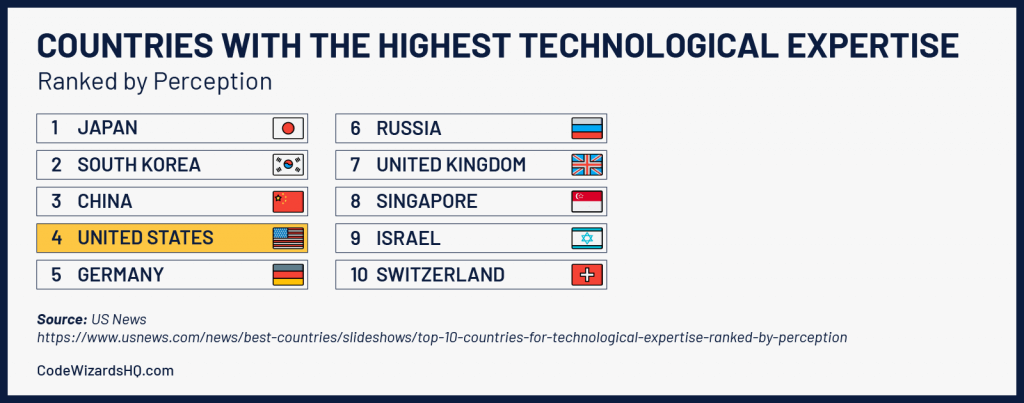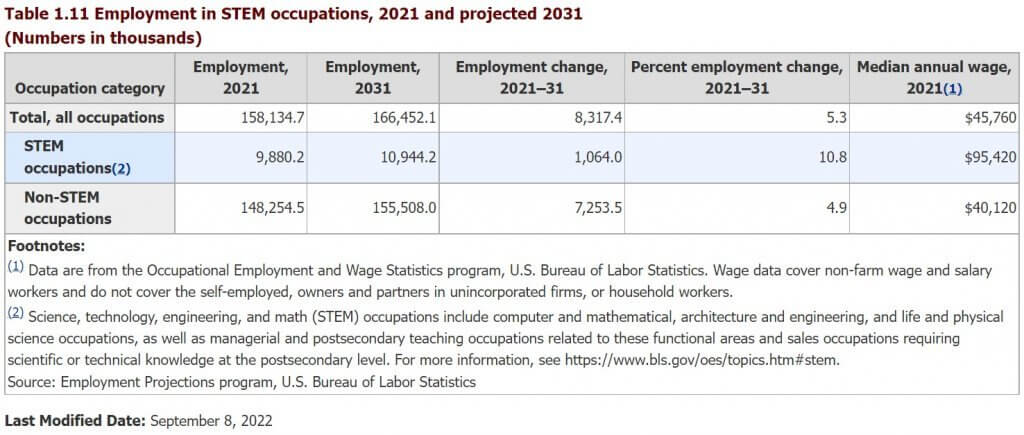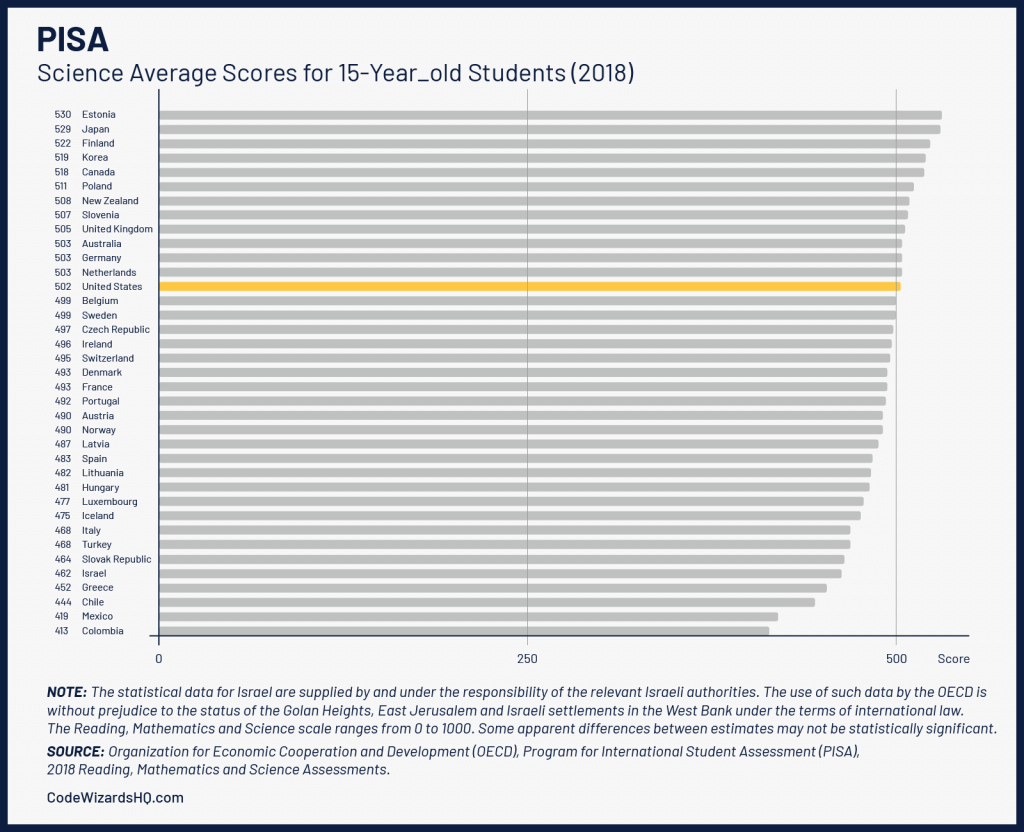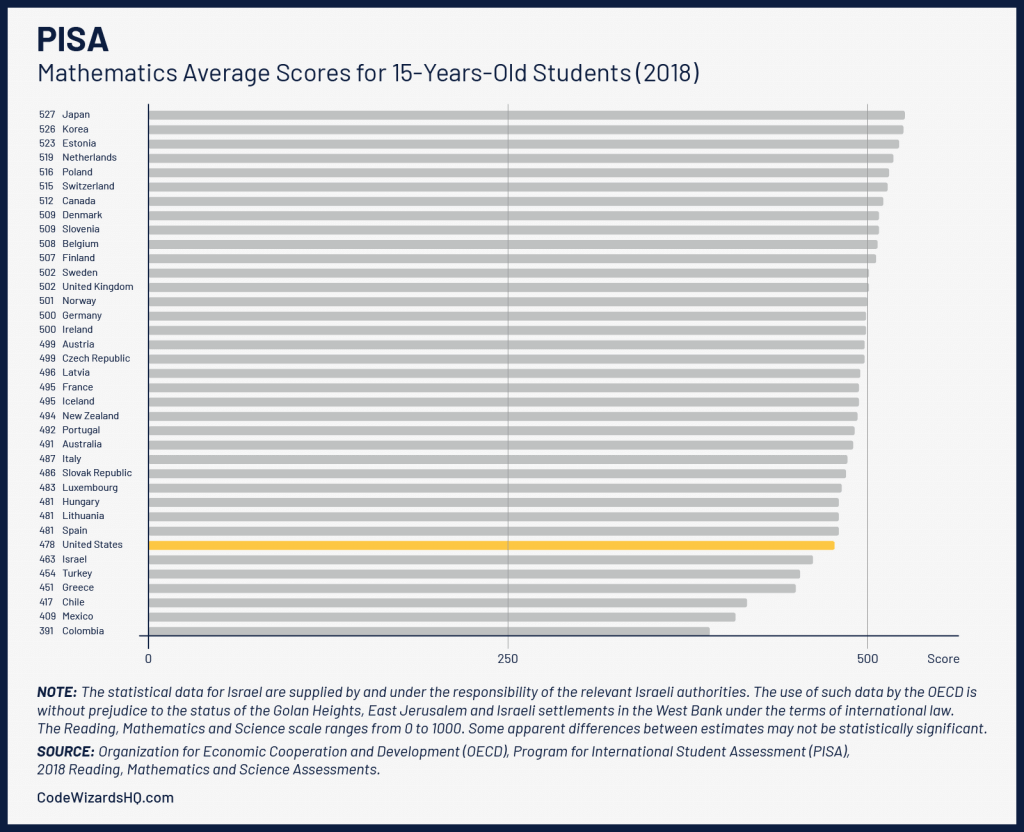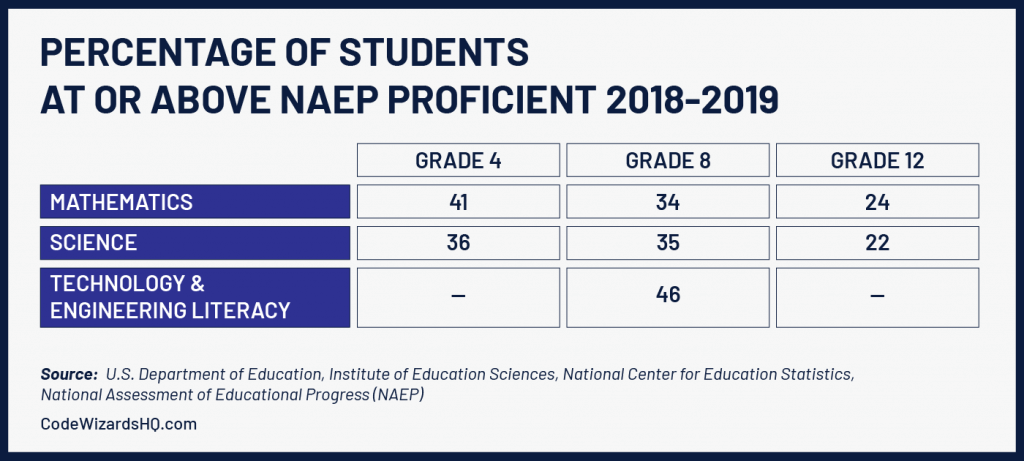 Photo from CodeWizardsHQ
Photo from CodeWizardsHQ
Originally Posted On: https://www.codewizardshq.com/us-behind-in-stem-education/
For decades, the U.S. was a powerhouse in STEM (science, technology, engineering, and mathematics) sectors.
Today, many believe we’ve fallen behind countries like Japan, South Korea, and China in the top countries for technological expertise.
Top 10 Countries With The Highest Technological Expertise in 2021
According to U.S. News, in 2021 the United States was ranked fourth of the countries with the most technological expertise. The survey is based on a study that surveyed more than 17,000 global citizens from four regions to assess perceptions of 78 countries on 76 different metrics.
- Japan
- South Korea
- China
- United States
- Germany
- Russia
- United Kingdom
- Singapore
- Israel
- Switzerland
Several factors point to the US falling behind in STEM education:
- US ranked 13th on Mathematics and 31st on Science test scores internationally
- Only 34% of 8th graders and 41% of 4th graders were at or above average in mathematics
- Only 35% of 8th graders and 36% of 4th graders were at or above average in science
- More than 1 million STEM jobs are unfilled
Pew research found that “only 29% of the general public ranked U.S. STEM education for grades K-12 as above average or the best in the world”.
Proficiency in STEM fields is important to a country’s economics, innovation, security, and global competitiveness. Advancements in STEM can lead to the next big technological advancement, finding a cure for cancer, or even ending world hunger.
STEM sector jobs make up a large part of the overall U.S. market and their importance continues to grow. Between 2020 and 2030, U.S. STEM jobs are estimated to grow by 10.5% compared to 7.5% for non-STEM occupations.
However, STEM education is not keeping up with the employment gap. It’s possible that 3.5 million STEM jobs will need to be staffed by 2025, including vital jobs in healthcare and technology. More than 1 million of those jobs are projected to go unfilled, but, why?
Recommended: Why Kids Should Learn STEM
Part of the reason is the state of U.S. STEM education.
While science and math are in the core K-12 curriculum, other important subjects, like computer science and engineering, are left out. Even in the core subjects, the US is falling behind.
In the latest Programme for International Student Assessment (PISA) test for 15-year-old students by the OECD the US ranked 13th on Mathematics and 31st on Science test scores.
In 2019, the National Assessment of Educational Progress (NAEP), a standardized test administered to US K-12 students, found that only 34% of 8th graders and 41% of 4th graders were at or above average in mathematics. By grade 12, proficiency has decreased to 24% in mathematics and 22% in science.
In addition, we’ve made little progress with STEM education in the last decade.
In the State of U.S. Science and Engineering 2022 report, average scores for U.S. fourth and eighth graders on a national assessment of mathematics improved from 1990 to 2007, but there was no overall measurable improvement in mathematics scores from 2007 to 2019.
We are also falling behind in computer science and engineering and are among the countries that do not currently require computer science education.
In 2020, Brookings studied online evidence of in-school computer science education across 219 countries. They found that:
- 44 (~20%) mandate that schools offer CS as an elective or required course
- 15 (~ 7%) offer CS in select schools and some subnational jurisdictions (states, provinces, etc.)
- 160 (~73%) are only piloting CS education programs or had no available evidence of in-school CS education
The U.S. is not one of the countries that requires computer science education.
Unlike countries such as Korea, Japan, China, Australia, and England, as of 2022, the U.S. has not implemented national CS mandates.
U.S. States That Require Computer Science Curriculum
According to Code.org, only 27 states currently require all high schools to offer computer science. While up from 35% in 2018, as of 2021, only 51% of high schools were even offering computer science courses.
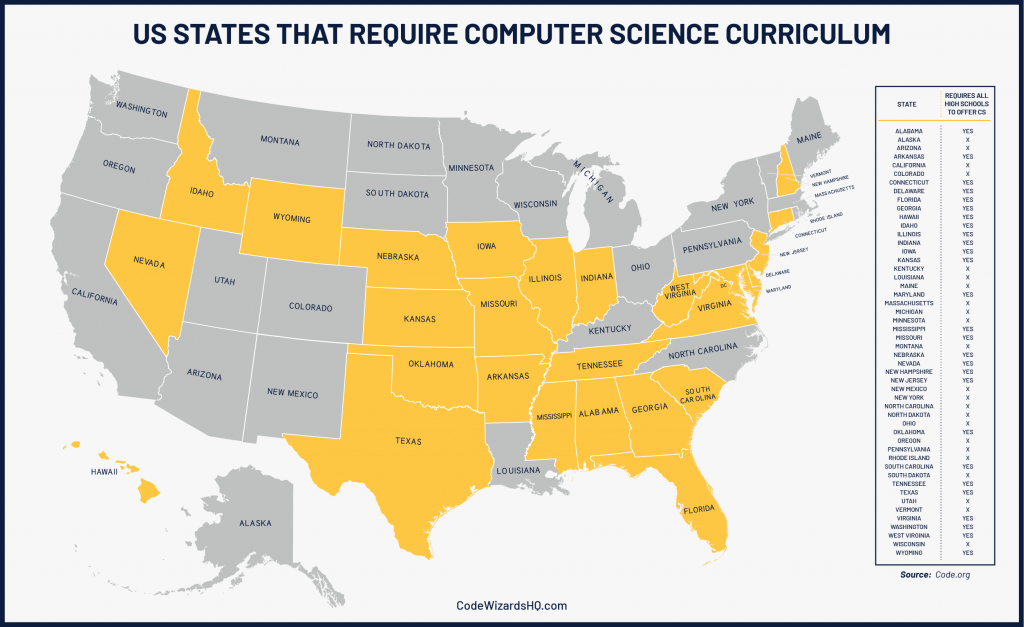

Unfortunately, several factors stand in the way of improved STEM education, such as costs, equity, and qualified instructors.
Costs
Some states have funds dedicated to STEM education, but the cost to make it required across grade levels would still be significant. Implementing a STEM curriculum can incur costs like computers, labs, and training for teachers. For students, earning a degree in computer science can also be costly. CodeLikeaGirl estimated that a 4-year university degree in STEM would cost between $45,000 and $60,000.
Equity
Studies have shown that there are disparities in STEM education for women, members of minority groups, and economically disadvantaged people. These may be a result of issues like gender discrimination, systemic racism, and other biases. This lack of equity means that a large portion of the population does not engage in or have access to STEM education.
Qualified Instructors
Many school districts already face a shortage of qualified teachers and even more so for low-income schools. The STEM teacher shortage is a national problem. The Educator Supply and Demand Report 2020-21 shows that all math and science education, along with computer science and technology education, have a shortage of teachers.
K-12 STEM education is the foundation of secondary and postsecondary education in these fields. Kids need to start learning STEM early to build their interest and confidence.
With little or no exposure in K-12 to STEM topics, students are not prepared for college and graduate level studies, therefore creating the employment gap. Coding classes, coding clubs, and coding competitions only make up for a small part of this gap. As a result, our workforce will lack the vital skills to fill these important positions.
So, what strategies can we use to improve the state of STEM education in the US?
1. National programs and policies
Improvement in programs and policies at the national level will be required to meet STEM needs. The U.S. Department of Education has set out some programs to improve STEM education. This includes federal grants for educators and students and the STEM Education Strategic Plan. You can see the 2021 progress report here.
2. Broader access to STEM education
All students, regardless of factors like gender, race, and income level, should have access to STEM education. Students need to be provided with equitable opportunities at an early age so they can prepare for secondary and postsecondary STEM education.
3. Train more qualified instructors
Currently, there is a national teacher shortage, but it will be important to expand and strengthen the pool of STEM teachers. Not only do we need more competent STEM teachers in all areas, but students also need diverse role models and mentors in STEM.
Recommended: 26 Reasons Learning to Code Benefits Your Child
As it stands, the U.S. appears to be falling behind other countries in STEM education. Without advancements in STEM, the U.S. will not have the skills to compete on an international level. While it is a significant educational challenge to improve STEM education in our country, it is one that is worth solving for future generations.

